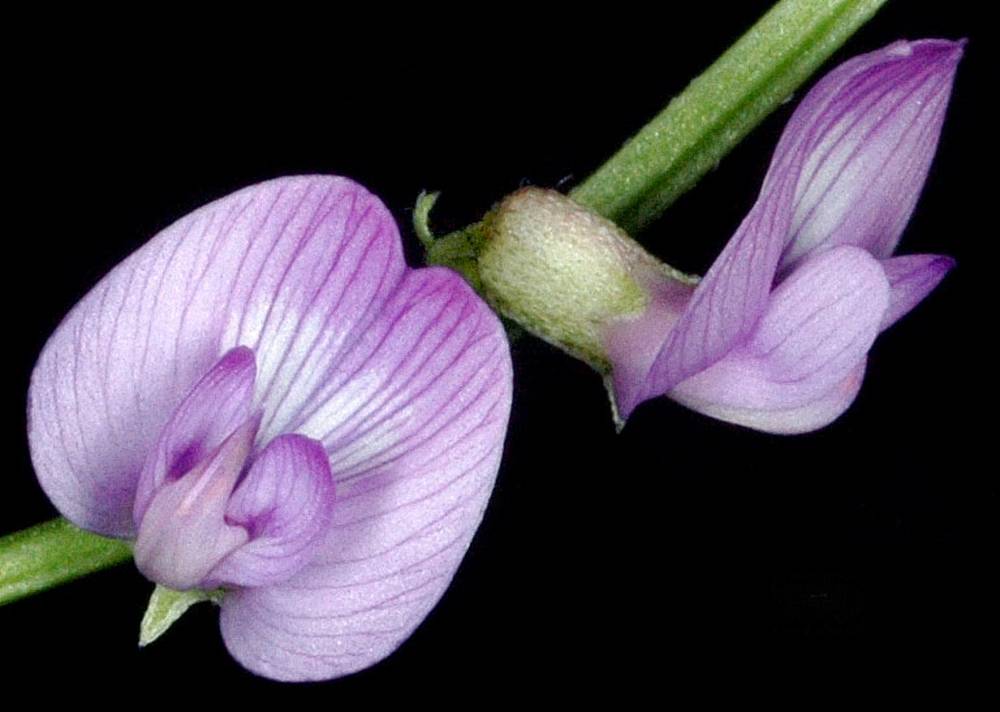
Plants perennial, caulescent, thinly strigillose, hairs basifixed.
Stems 1–few, prostrate, 30–40 cm.
Leaves 3.5–7 cm; leaflets 7–11, linear to linear-elliptic, (5)8–20 × 1–3 mm, tips obtuse or sometimes mucronulate, surfaces abaxially strigillose, adaxially glabrous; stipules 1.5–3 mm, free.
Inflorescences racemes loosely 10–18-flowered; peduncles 3–6 cm; bracts 1–1.5 mm; pedicels 1–1.5 mm; bracteoles 0.
Flowers spreading at anthesis, declined in age; calyces 3–3.3 mm, strigillose with white or a mixture of white and black hairs, tubes 2.3–2.5 mm, teeth triangular, 0.7–0.9 mm; corollas 6.5–7 mm, whitish, tinged with lilac; ovules 8–10.
Fruits unilocular, spreading or declined, oblong-ellipsoid,
± straight, strongly laterally compressed, bicarinate, 8–11 × 2.4 × 3 mm, strigillose; valves thinly cartilaginous; stipes 4–5 mm.
Moist meadows, ditches, wet flats. Flowering Jun–Jul. 1200–1400 m. ECas. Native. Endemic to Oregon.
Applegate’s milkvetch is currently known only from Klamath County, Oregon.